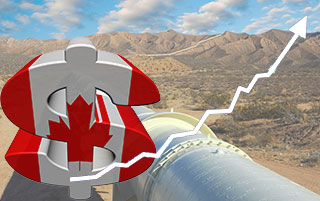The Canadian Dollar rose on Tuesday after Trump announced that his administration will start going through the approval process to build the Keystone XL pipeline. This knee jerk reaction from the markets, hides many of the intricacies that such a project has to deal with in order to succeed. In fact, if Keystone XL can be built – assuming it is profitable after Trump declared that the project must use US steel – it will take some time to do so; when it comes online, it could create a trap that could depress oil prices and the Canadian Dollar as a result.
Oil Supply
Right now, markets are still dealing with oil supply surpluses. OPEC cuts along with the cuts that some non-OPEC members have announced, served to hike the prices over the $50 USD per barrel mark. Nevertheless, prices have been hovering around the $53 USD mark for almost 2 months. As soon as the price rises further, and surpasses the $60 USD mark, shale producers will ramp up production, putting downward pressures on crude yet again.
Canadian Oil and Keystone XL
This can take a few months, but it will certainly help to accentuate a low price environment for oil, in which prices can be more volatile than usual. Trans Canada, the company in charge of the Keystone XL pipeline project, will have to calculate future profitability within this environment. If it decides that the pipeline will still be profitable, despite the downward pressures on oil price, then the completion of the project will serve to bring more Canadian oil to refineries in Texas, at a cheaper price. This could serve to exacerbate the oil glut, and send prices crashing once again, just as OPEC and shale oil producers learn to balance each other’s moves.
Trump’s Conditions
If oil prices suffer because of a sudden surge in supply from Canada, thanks to the Keystone XL pipeline, then the Canadian Dollar will ultimately suffer. Trump’s conditions for the project, namely the fact that he is demanding that US steel be used to build the pipeline, might also dent the value of the Loonie in the process. The outflow of capital from Canada into the US to acquire the material for the pipeline, would mean that much of the benefits of building the pipeline itself, will remain in the US. Canada would only see the benefits once the pipeline is completed and Canadian oil will be able to flow to refineries in Texas. By then, the aforementioned oil glut could be further exacerbated. This means that the Keystone XL pipeline could become a trap, and Canadian Dollar gains from the latest news, will probably be short lived.







